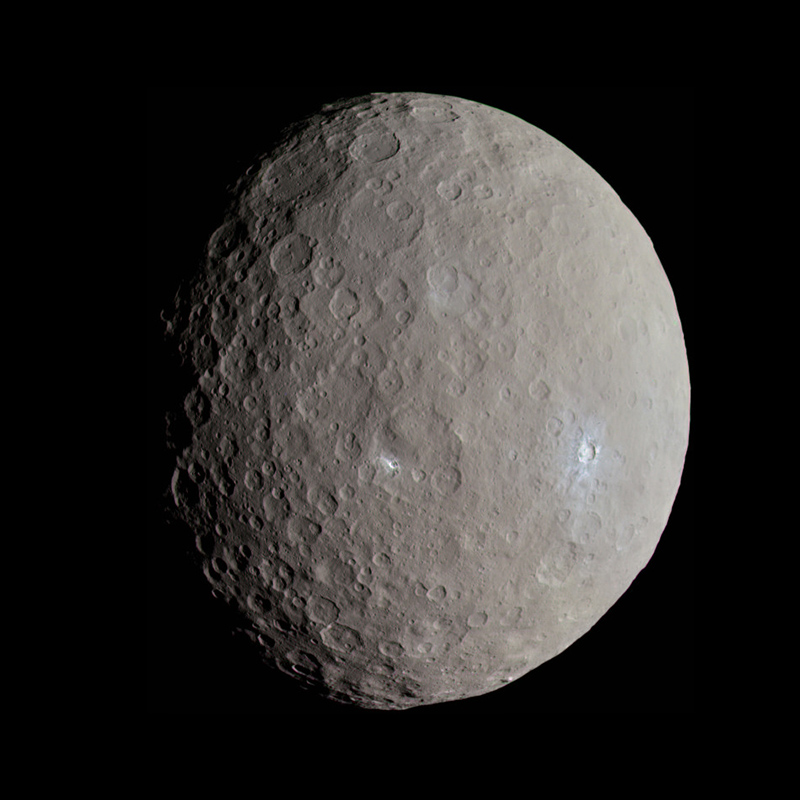Dawn, a pioneering mission to our solar system's asteroid belt, has gone silent. In late October 2018, Dawn ran out of hydrazine, the thruster fuel needed to orient the spacecraft for communication with Earth and the generation of solar power. Although now retired, the Dawn mission leaves a rich scientific legacy. It is the first and only spacecraft to have visited the dwarf planet Ceres—the largest object in the asteroid belt between Mars and Jupiter—as well as Vesta, the second-largest object in the belt. Before Dawn's arrivals, humanity had little clue as to what these worlds really looked like. See also: Asteroid; Ceres; Earth; Dawn mission; Hydrazine; Jupiter; Mars; Planet; Solar cell; Solar system; Space communications; Vesta

Dawn launched in 2007 and served as a demonstration for a cutting-edge ion propulsion system. The highly efficient drive, in which xenon gas is ionized and spewed out a nozzle to generate thrust, reduced fuel mass requirements by a factor of 10 compared to standard chemical propulsion. Using this system, Dawn made history as the first spacecraft ever to have separately orbited two extraterrestrial bodies. First came Vesta, arriving in July 2011. Then Dawn broke orbit and cruised onward to Ceres, rendezvousing in March 2015. See also: Dawn ion propulsion system; Ion; Propulsion; Xenon
At Vesta, Dawn made detailed maps of the potato-shaped, cratered asteroid that has a mean diameter (averaging its three axes of varying lengths) of about 525 km (325 mi). Dawn revealed that a mountain twice the height of Mount Everest, Earth's tallest, rises from Vesta's lumpy surface. The spacecraft also confirmed that impacts on Vesta over the solar system's history have gouged out space rocks that often reach Earth as meteorites. See also: Meteorite; Mountain

During approach, Dawn's imagers made the surprising find of bright deposits on Ceres' surface, later identified as salts. Overall, Dawn discovered that Ceres has the chemistry of an ancient, salty ocean frozen on its surface. Some of these materials might have been deposited there in geological recency by cryovolcanoes, suggesting that an inner ocean could still exist under Ceres' icy crust. The spacecraft also remotely detected organic molecules—critical ingredients for assembling life. Putting those two results together, the intriguing takeaway is that dwarf planets could be potential abodes for alien life, expanding the candidate objects for where conditions favorable to biology might emerge. See also: Astrobiology; Biology; Ocean; Organic chemistry; Salt (chemistry); Volcano; Water

Analyses of the substantial data haul from Dawn will continue for years, ensuring that although the mission has ended, its scientific legacy will only grow.





